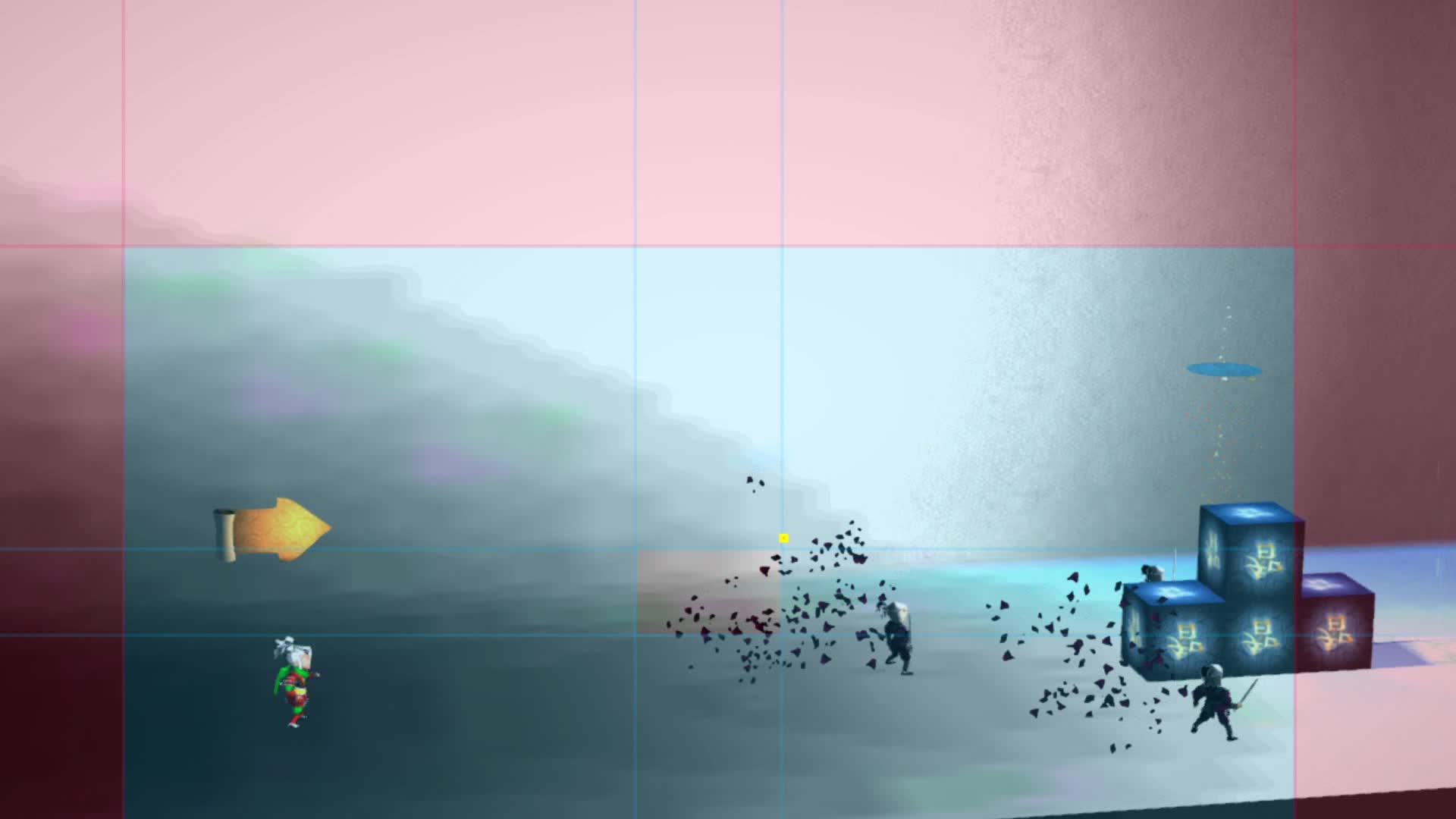

Over time, dust, debris and moisture will settle on the blade, which can lead to rust. Regardless of how you display your katana, it's important to clean, polish and oil it on a regular basis. However, if you're displaying it in a dojo you should ask your sensei for a recommendation. Assuming you display your katana in your home, either way is perfectly acceptable. With that said, traditional Japanese etiquette says that katanas displayed with the tsuka on the left signals peace, whereas displaying the katana with the tsuka on the right signals combat readiness and ability to fight. It would look a lot less cool and people would wonder 'why is the sword upside down' Also, while we're on the subject, he also seems ambidextrous since the switches hands depending if the sprite is facing left/right. You can display your katana with the tsuka on either side without worrying about it negatively affecting the blade or other components. I mean, to be honest the whole look would be ruined if the katana was reversed and curved upward. Since then, the tradition remains, with martial arts practitioners and sword collectors alike continuing to display their katanas in this manner.įrom a functional point of view, displaying your katana with the tsuka on the left or right makes no difference. This dates back hundreds of years to feudal Japan, during which this was the standard way of displaying katanas. Displaying the katana with the cutting edge facing up is a means of "respecting" the sword. Some people assume that displaying swords with the cutting edge facing up helps to protect the blade from damage, but this isn't necessarily true. Because the katana is worn with the cutting edge facing up, it should also be displayed with the cutting edge facing up. Traditionally, Japanese swords like the katana are displayed the same manner in which they are worn. In feudal Japan, samurai warriors would place their swords on the katanakake before entering buildings, though this type of katanakake featured a slightly different design. The katanakake is essentially a wooden stand with pairs of hooks that's designed to hold one or two swords.

One of the most popular, however, is the katanakake. There are dozens of different display cases and stands in which you can place your katana. But there are a few things you should know about displaying a katana. A high-quality katana serves as a focal point, sparking conversation by anyone who sees it.

It was still important that they could defend their lords without standing up though.Regardless of how active you are in martial arts, your katana will probably spend most of the time on display - and that's okay. Generally depicted as double-edged with a black, brown or gold cross-shaped hilt and positioned at 45° angle, often with its tip at the lower left. This can be used sitting down or on one's knees (if a soldier was in front of their lord, they were expected to not stand up in their presence. Dagger Emoji Meaning A pointed knife with a steel blade, as used for thrusting in close combat. At the same time, return the saya to its original position on your belt.Īnother benefit is being able to draw a relatively long sword in confined spaces (uses much less horizontal space). Lean forward, put the other hand on the handle, and draw the blade. Pull the scabbard just far enough to loose the blade. To imagine this, pretend you're a samurai. This allows the user to have extremely fast draw times because you are reducing the time the blade has to travel with both hands. The sword is drawn by essentially positioning the sword in the "already out" position, and the saya is slid back to reveal the rest of the blade. Instead, the saya is inserted through the top (and out the side) of the hakama, the warrior's skirt/pants. It has a little bit of a tie-down but it doesn't provide most of the "holding" force for the katana.

Additionally, the saya (scabbard of the katana) is not really fastened to the wearer.


 0 kommentar(er)
0 kommentar(er)
